Children Party Sound Tips
Children Party Sound Tips– Make Every Giggle Heard with Peak Audio

Children Party Sound Tips
Children’s parties are lively, chaotic, and filled with boundless energy—and managing that energy often comes down to how well you control the atmosphere. One of the most overlooked but critical elements is sound. From the moment the first child arrives to the last dance or game, sound sets the mood. Playing cheerful music as guests arrive can ease shyness and get kids excited, while background music during meals or transitions keeps things flowing smoothly. Without it, the event can feel flat or disorganized.
Another key benefit of great sound is clarity. Children don’t always focus well, so having clear microphones for announcements, game instructions, or sing-alongs helps keep their attention and encourages participation. Whether you’re hiring a DJ or running things from a playlist, a quality speaker setup ensures every laugh, song, and cheer is heard. At larger parties or in outdoor spaces, poor sound can quickly lead to confusion and kids losing interest. That’s where the right sound system comes in—it makes your job easier and the event smoother.
At Peak Audio, we understand the unique dynamics of children’s events. Our team provides tailored sound solutions that ensure volume levels are kid-friendly, announcements are crisp, and music is just the right energy to match your theme. With years of experience supporting birthday parties, school fun days, and community kids’ events, we know how to make every giggle, gasp, and song sparkle through the speakers. Great sound isn’t just for concerts—it’s for the memories your little ones will cherish.
1. Understanding Sound Needs for Kids’ Parties
Sound at a children’s event isn’t just background noise—it’s a key part of the party’s energy, flow, and atmosphere. Kids respond strongly to audio cues, whether it’s music to get them dancing, sound effects for games, or a quiet track to calm them down before cake-cutting. A well-planned sound setup considers clarity, comfort, and safety while ensuring fun for kids and peace of mind for parents.
1.1 Why Sound Quality Matters at Children’s Events
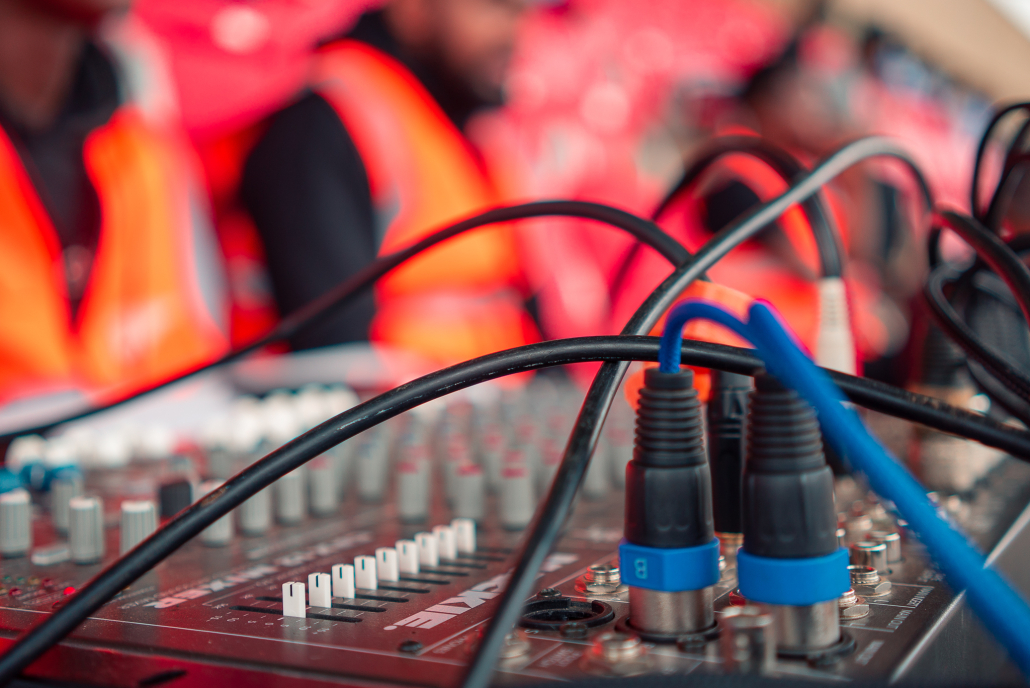
Children Party Sound Tips
Sound quality can make or break the success of a kids’ party. Poor audio can lead to disengaged children, missed instructions, or even sensory discomfort. High-quality, well-managed sound ensures the party is both exciting and safe.
-
Engagement and Energy: Lively music with clear beats encourages children to participate in games, dancing, and activities. Kids respond well to rhythmic cues, so a sharp, distortion-free setup helps keep the energy consistent throughout the event.
-
Safety and Instructions: Clear sound is critical for giving directions during games, announcing winners, or making safety-related announcements (e.g., “Please stay in the play area”). If children can’t hear these, activities can quickly become chaotic.
-
Mood Setting: A quality audio system lets you control the atmosphere—upbeat tracks during activities, softer tunes during mealtime or cake-cutting—helping regulate kids’ moods without overwhelming them.
1.2 The Unique Sound Dynamics of Children’s Voices and Attention Spans
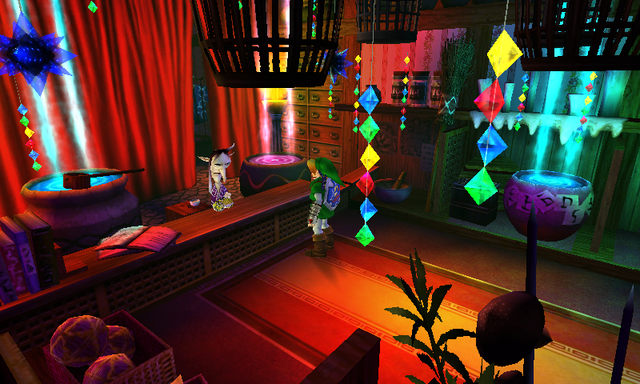
Children Party Sound Tips
Children don’t process sound in the same way adults do. They are more sensitive to high frequencies and more easily distracted by unclear or distorted audio. Sound planning should match these sensory realities.
-
Higher Frequency Sensitivity: Children’s ears are more attuned to higher-pitched sounds. Harsh treble, microphone feedback, or tinny speakers can cause discomfort or even mild pain, making them shy away from the sound source.
-
Shorter Attention Spans: Kids can lose interest in seconds if they can’t clearly hear the instructions or music they’re supposed to follow. Good audio clarity ensures they stay focused and involved in activities.
-
Crowd Noise Factor: Kids are naturally noisy—laughter, shouting, and squeals can overpower weak sound systems. You need speakers with enough clarity and volume to stand out without overpowering the room.
1.3 Common Mistakes to Avoid with Children’s Party Sound Setups
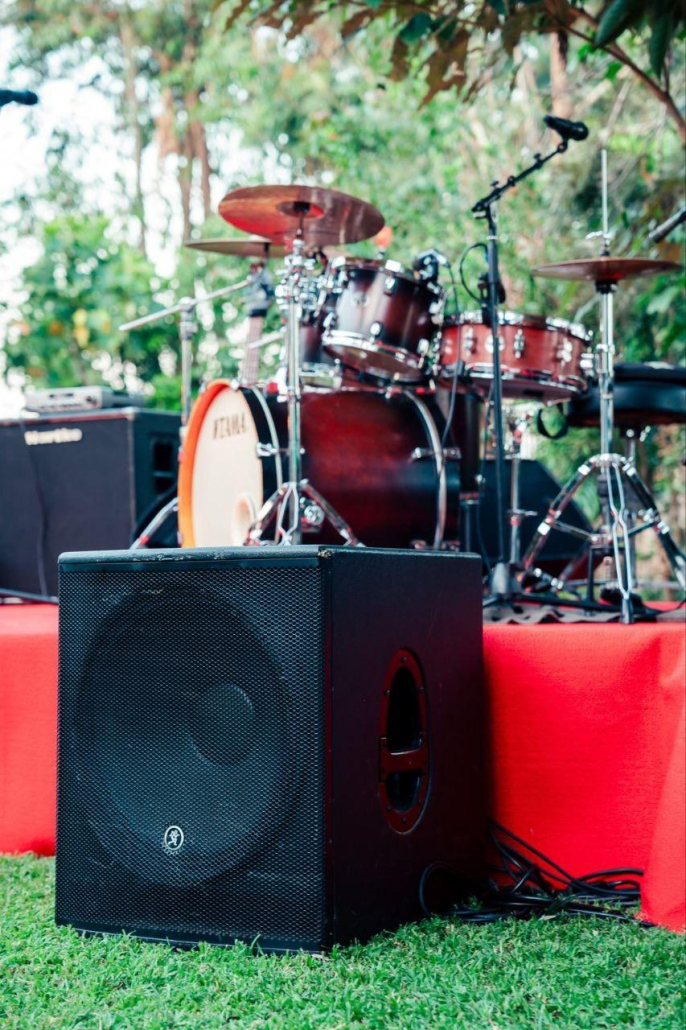
Children Party Sound Tips
Many sound problems at kids’ parties come from overlooking basic setup principles. Avoiding these mistakes ensures a smoother event and happier kids.
-
Overpowering Volume: Loud sound can cause sensory overload in children, making them anxious or irritable. Volume should be set so it’s audible over chatter but comfortable enough for parents to converse without shouting.
-
Ignoring Microphone Quality: Cheap microphones often cause muffled speech or static. Since announcements and game instructions are central to kids’ events, invest in a reliable mic with a pop filter to avoid sudden harsh noises.
-
Poor Speaker Placement: Positioning speakers directly toward seated children can be uncomfortable. Speakers should be elevated and angled to distribute sound evenly across the venue.
-
Skipping Sound Checks: Without a pre-event sound test, you risk embarrassing moments like dead microphones, audio dropouts, or piercing feedback during activities. Testing also helps fine-tune volume levels to suit the room size and number of guests.
For kids’ parties, good sound is about balance—clear enough to excite, controlled enough to be safe. By understanding children’s sensitivity to audio, keeping the volume comfortable, and avoiding common setup mistakes, you create an environment where every song, game, and announcement is a joyful part of the experience rather than a sensory challenge.
2. Choosing the Right PA System for a Kid’s Event
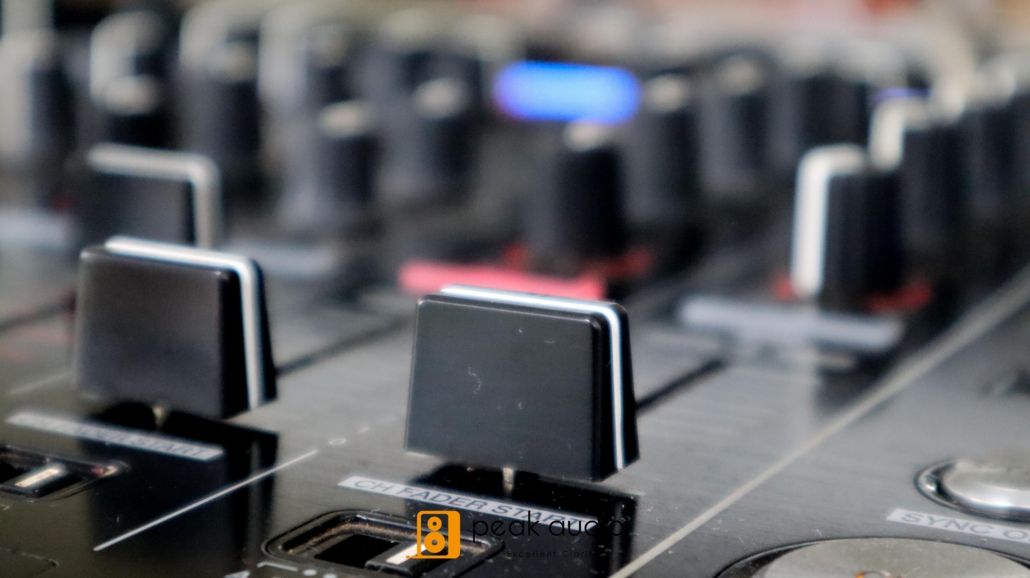
Children Party Sound Tips
Selecting the right PA (public address) system for a children’s party is more than just finding something that plays music—it’s about ensuring that every announcement is heard clearly, every game is exciting, and the volume is safe for young ears. The right system should be tailored to the size of the venue, the number of attendees, and whether the event is indoors or outdoors. A good PA setup balances clarity, portability, and safety while keeping setup stress-free for the event organizer.
2.1 What to Look For: Clarity, Safety, and Size
The core criteria for a children’s party PA system are clarity of sound, safety in volume control, and a size that suits the space.
-
Clarity: The PA system should deliver crisp, distortion-free sound so that kids and adults can easily hear both music and voice announcements. Look for systems with a full frequency range (around 50Hz–18kHz) so you capture bass for music and treble for speech without harshness.
-
Safety: Since children’s ears are more sensitive, the PA should have reliable volume control and ideally a limiter to prevent accidental spikes in sound that can startle or harm them.
-
Size and Power Match: The system’s wattage should match the size of the venue—too powerful for a small room can overwhelm; too weak for a large hall will get drowned out by background chatter. As a rule, 30–50 watts works for small indoor gatherings, 100–200 watts for larger halls, and 300+ watts for outdoor events.
2.2 Compact and Portable PA Systems Ideal for Small Venues or Home Setups
For indoor events or small gatherings (e.g., living rooms, community halls, or apartment clubhouses), you want something lightweight, quick to set up, and easy to pack away.
-
Portability: Look for systems with built-in handles, rechargeable batteries, and wheels if possible. This allows you to set up and move without multiple trips or heavy lifting.
-
All-in-One Features: Some portable PA systems come with built-in Bluetooth, USB ports, and wireless microphones—perfect for playing kids’ playlists directly from a phone and hosting interactive games without extra gear.
-
Quick Setup Time: Choose plug-and-play systems so you don’t spend an hour connecting cables while kids are getting restless. For home parties, models like the JBL EON ONE Compact or Mackie FreePlay Live are good examples.
2.3 Recommended Setups for Outdoor Children’s Parties
Outdoor events pose unique challenges because sound dissipates quickly in open air, and background noise from wind, traffic, or playgrounds can interfere.
-
Higher Wattage & Projection: Outdoor setups need more power—generally 300 watts or more—to project sound clearly over a wide area without distortion.
-
Weather-Resistant Equipment: Even if the weather looks fine, have speakers that can handle a little moisture or dust, or keep covers/tarps handy for quick protection.
-
Speaker Placement for Coverage: Place speakers slightly elevated on stands, pointing towards the crowd but angled down to avoid sound spill beyond the event area. This improves clarity and keeps volume levels safe for kids close to the front.
-
Multiple Speaker Setup: Instead of one loud speaker blasting, use two or more speakers spread out—this reduces the need for extreme volume and provides even sound coverage for all guests.
The best PA system for a kid’s event is one that delivers clear, safe sound while being portable and easy to manage. For small, indoor gatherings, compact battery-powered units are ideal. For outdoor parties, more powerful, weather-resistant setups with well-planned speaker placement will ensure music and announcements reach everyone without overwhelming young ears. By matching your PA choice to your event’s size and location, you can keep the energy high and the stress low.
3. Wireless Mics and Announcements Made Fun
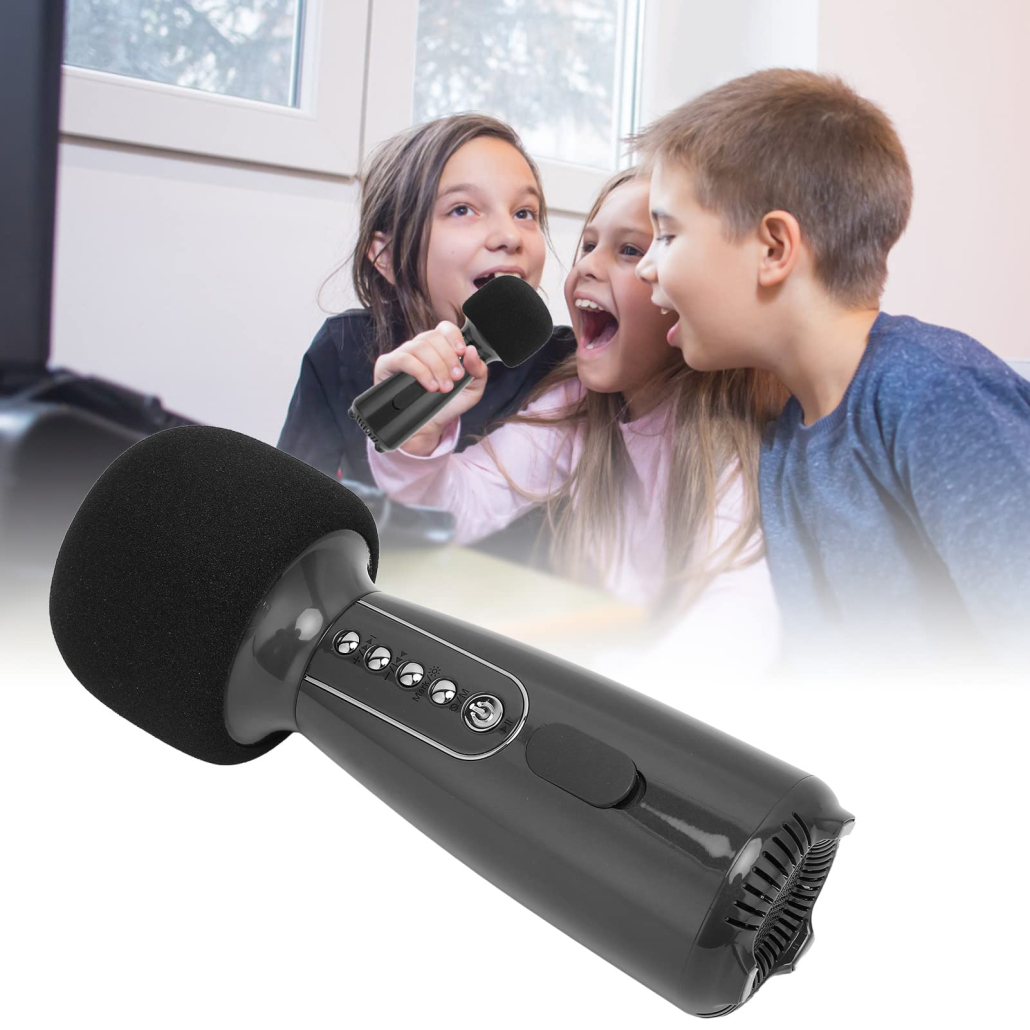
Children Party Sound Tips
Children’s parties are bustling, noisy, and full of movement—which makes a wireless microphone one of the most valuable tools you can have. Unlike wired microphones, wireless mics free you from being anchored to a single spot, allowing you to move around the venue, interact with children face-to-face, and keep the energy level high from start to finish. They also help maintain control over a lively crowd without shouting, which means you can preserve your voice and deliver announcements clearly over music and background chatter.
Whether you’re introducing a game, hyping up a dance contest, or calling everyone for cake, a wireless mic ensures your voice reaches every corner—turning routine announcements into exciting moments that hold children’s attention.
3.1 Why Wireless Microphones Are a Lifesaver for Kids’ Parties
Children’s events are unpredictable—kids are scattered, activities happen in different zones, and you might need to handle surprise moments (like a spontaneous birthday song) anywhere in the venue. Wireless mics make it possible to stay in control without breaking the flow of fun.
-
Freedom of Movement: You can walk between tables, move to the game area, or join the dance floor while still being heard clearly. This mobility is key when you need to manage activities in large spaces like school halls, parks, or playgrounds.
-
Face-to-Face Engagement: Being able to approach children directly—whether to announce winners or encourage participation—makes your interaction more personal and exciting. Kids respond better when the host is present with them rather than far away on a stage.
-
Safety and Space Management: With no cables running across the floor, there’s less risk of kids tripping or equipment being pulled over accidentally. This is especially important in spaces where children are constantly running and playing.
-
Quick Transition Between Activities: Need to announce the start of a new game right after leading a sing-along? A wireless mic allows you to switch locations instantly without pausing to adjust wires or equipment.
3.2 Tips for Using Mics Effectively for Games, Songs, and Announcements
A microphone is not just for speaking—it can be part of the entertainment itself. The way you use it can make games and activities more exciting while keeping the party structured and on schedule.
-
Game Hosting: Use a lively, animated tone and build suspense when announcing scores or calling out names. For example, during a treasure hunt, you can narrate clues dramatically over the mic to keep kids engaged.
-
Sing-Alongs and Group Activities: Keep the mic at an appropriate distance (about 6–12 inches from the mouth) to avoid muffling or distortion. Invite kids to repeat phrases, sing verses, or shout catchphrases together to make them feel part of the moment.
-
Structured Announcements: For important instructions (like safety reminders or transitions between activities), speak slowly and clearly. Break instructions into short, memorable steps and use playful language—e.g., “When I say go, hop like a bunny to the game area!”
-
Adding Sound Effects: Some wireless mics connect to mixers or apps that allow you to add funny sound effects or music stingers after announcements, which keeps kids entertained and attentive.
3.3 Avoiding Feedback and Noise Interference During Interactive Moments
A common challenge with microphones—especially in energetic settings—is managing sound feedback and avoiding interference that can disrupt the flow of the party. Knowing how to prevent these issues keeps the event professional and comfortable for guests.
-
Speaker and Mic Positioning: Stand to the side or behind speakers, not directly in front, to prevent the audio loop that causes feedback squeals. If you need to walk near the speakers, lower the mic slightly to reduce pickup.
-
Frequency Management: In busy areas with many wireless devices, signal interference can occur. Choosing a microphone with multiple frequency channels allows you to quickly switch to a clear one if interference arises.
-
Volume and Gain Control: Keep the volume at a comfortable level—loud enough to be heard but not overpowering for young ears. Adjust gain so the mic picks up your voice clearly without capturing excessive background noise.
-
Battery Management: Always have extra charged batteries or a backup mic ready, as a dead microphone mid-game can stall momentum and lose the children’s attention.
Wireless microphones are not just a luxury for children’s events—they’re a necessity for keeping things lively, organized, and safe. They give you the mobility to interact directly with kids, the ability to make announcements from anywhere, and the flexibility to handle activities without pausing to deal with cables or setup changes. When used creatively and managed properly, a wireless mic becomes part of the entertainment itself, turning ordinary announcements into interactive, memorable moments that keep children laughing, listening, and engaged.
4. Balancing Music Volume and Kids’ Comfort
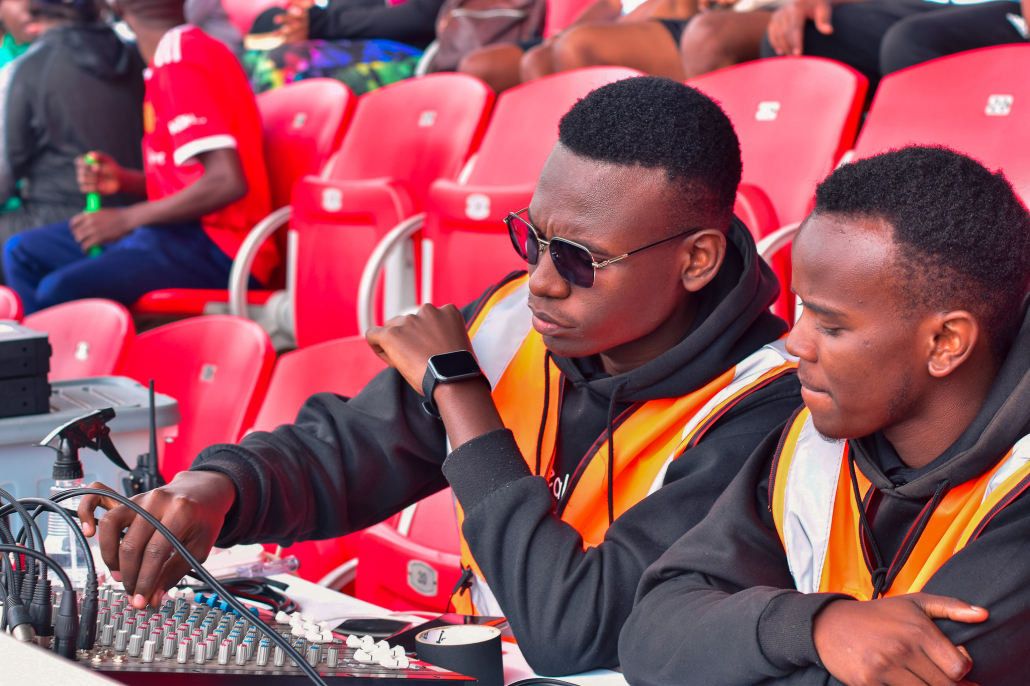
Children Party Sound Tips
Music is the heartbeat of any children’s party—it sets the energy, keeps the flow moving, and helps create a joyful, memorable atmosphere. However, while music can make an event exciting, it can also overwhelm children if it’s too loud or distract from activities if it’s too soft. Kids’ hearing is more sensitive than adults’, and prolonged exposure to loud sounds can be both uncomfortable and unsafe.
The key to great sound at a children’s event lies in striking the perfect balance—ensuring music is engaging and uplifting without overpowering voices, games, or conversations. By understanding safe volume ranges, adjusting for different activities, and using the right equipment, you can keep the atmosphere lively while protecting young ears.
4.1 How Loud Is Too Loud? Understanding Safe Volume Levels for Children
Children’s ears are more susceptible to damage from high sound levels, so it’s essential to keep volumes within safe limits recommended by health experts.
-
Safe Listening Levels: The World Health Organization recommends keeping continuous background noise at or below 85 decibels (dB) for adults, and even lower for children—around 75–80 dB for prolonged exposure. Anything above 90 dB should be avoided for extended periods.
-
Signs It’s Too Loud: If children are covering their ears, talking louder than normal to be heard, or moving away from speakers, the volume needs to come down immediately.
-
Positioning to Reduce Impact: Keep speakers at least a few meters away from the main play area and direct sound slightly above head height so the music fills the space without blasting directly at the children.
-
Testing with a Decibel App: Many smartphones have free apps that measure sound levels, letting you monitor and adjust in real-time.
4.2 Adjusting Music Volume for Games vs. Free Play vs. Mealtime
Not all moments in a party need the same energy level, so adjusting the volume to fit the activity helps keep the atmosphere comfortable and engaging.
-
Games and Activities: Raise the volume slightly during high-energy games like musical chairs or freeze dance, but not so much that the host or game leader can’t be heard clearly over the mic. The goal is excitement without chaos.
-
Free Play and Social Time: Lower the music so it creates a pleasant background ambiance. This allows children to talk and laugh without straining their voices, and parents can chat comfortably.
-
Mealtime or Cake Cutting: Reduce volume even further to encourage conversation, let guests hear speeches or birthday songs clearly, and avoid overstimulating tired or younger children.
-
Transitions Between Segments: Fade music smoothly instead of abruptly cutting it off—this helps maintain the party’s rhythm and keeps children calm between activities.
4.3 Using Mixers to Balance Background Tracks and Live Interactions
A sound mixer is an invaluable tool for keeping audio levels balanced between music, microphones, and any other sound effects you’re using.
-
Independent Control: Mixers allow you to control the volume of music separately from the microphone, so you can instantly lower background tracks when speaking without stopping the song entirely.
-
Smooth Layering: During games or interactive moments, you can keep background music playing softly under the host’s voice for a more dynamic and professional sound.
-
Avoiding Audio Clashes: With a mixer, you can fine-tune EQ (equalization) settings to reduce bass booms or sharp treble that can overwhelm children’s ears, ensuring a smoother, more pleasant sound profile.
-
Flexibility for Special Effects: If you’re using sound effects (like drum rolls for winners or fanfares for big moments), a mixer helps you blend them seamlessly with music and announcements.
Balancing music volume at a children’s party is more than just turning a dial—it’s about creating a safe, engaging sound environment that complements the event’s activities without overwhelming young guests. By keeping volumes within safe limits, adjusting levels for different moments, and using a mixer for precise control, you can ensure music energizes the party while protecting children’s comfort and hearing. The result? A celebration that sounds as good as it feels—fun, exciting, and perfectly tuned to the needs of its audience.
5. Curating the Right Playlist for Kids
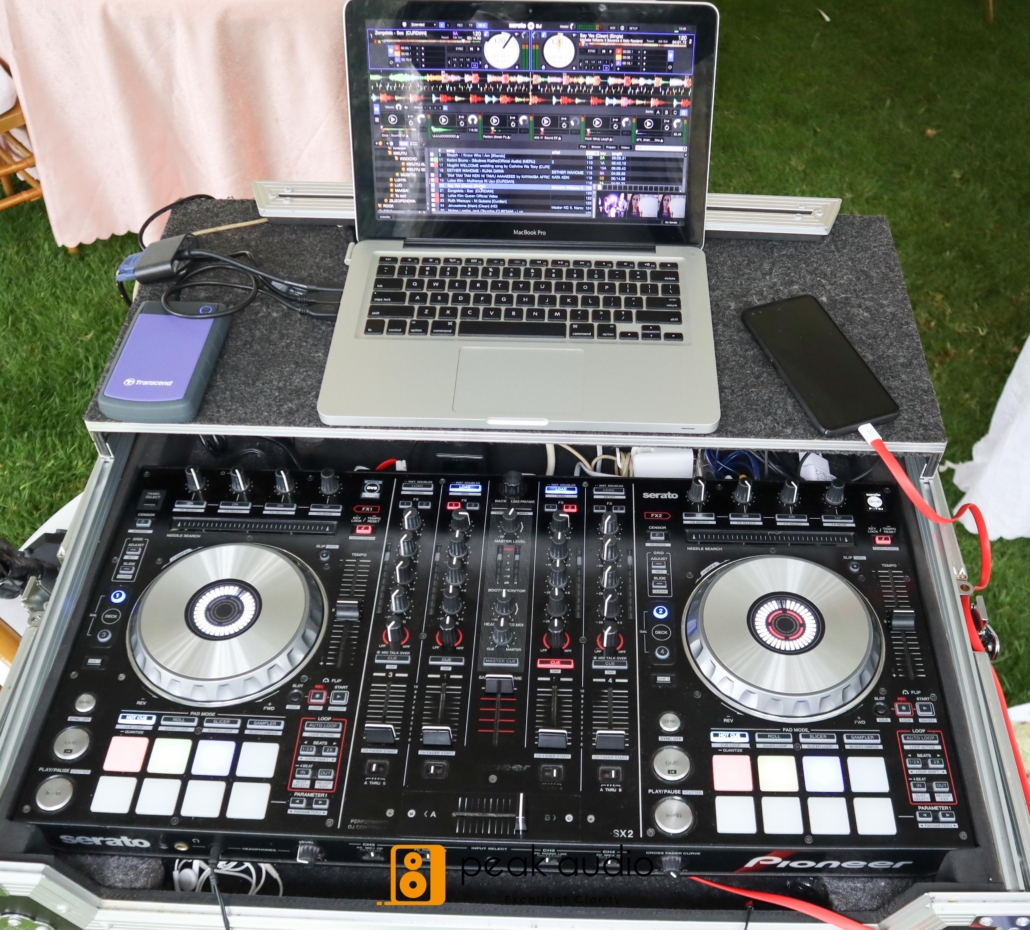
Children Party Sound Tips
Music selection can make or break the vibe of a children’s party. The right songs not only entertain but also set the tone, encourage participation, and match the energy level of different activities. Kids respond to music differently depending on their age group—toddlers may prefer nursery rhymes and familiar melodies, while tweens lean toward pop hits and catchy dance tracks.
The goal is to create a playlist that balances fun, variety, and age-appropriateness while keeping the flow of the event smooth. This means considering the audience’s age range, mixing music genres for different moments, and using the right tools or professionals to keep the soundtrack upbeat and engaging.
5.1 Age-Appropriate Music Selection: Toddler to Tween
Not all children’s parties are the same—music that excites a five-year-old might bore a ten-year-old, and vice versa. Tailoring song choices to the age group ensures maximum enjoyment.
-
Toddlers & Preschoolers (Ages 1–4): Go for songs with clear rhythms, repetitive lyrics, and simple melodies. Examples include nursery rhymes, classic children’s songs, and educational tunes like Baby Shark or The Wheels on the Bus. These help engage shorter attention spans and encourage singing along.
-
Early Primary (Ages 5–8): Add upbeat tracks from children’s movies, animated series, and kid-friendly pop songs. Think Frozen, Encanto, or Kidz Bop versions of popular hits—energetic but still safe in lyrics and themes.
-
Tweens (Ages 9–12): Incorporate clean pop, dance, and mild hip-hop tracks. Keep lyrics appropriate but let them feel “grown-up” with trendier beats, such as Disney Channel stars, chart-friendly clean versions, or local Kenyan pop hits.
-
Mixed-Age Parties: Use a broad mix to keep everyone happy—alternate between fun sing-alongs for younger kids and lively dance tracks for older ones.
5.2 Mixing Music Styles: Sing-Alongs, Dance Beats, and Background Tunes
Variety keeps the party fresh and prevents music fatigue. Different moments in the event call for different types of music.
-
Sing-Alongs: Perfect for group activities, cake cutting, and moments when you want all kids engaged. Choose easy-to-remember choruses, preferably songs with actions or hand movements to encourage participation.
-
Dance Beats: Use high-energy, rhythmic tracks during games or dance competitions. These should be lively enough to keep kids moving but not too fast or intense that it becomes chaotic.
-
Background Tunes: When kids are eating, doing crafts, or having free play, lower the tempo and volume. Soft, happy tunes help maintain a cheerful atmosphere without overwhelming conversation or concentration.
-
Themed Playlists: For themed parties (e.g., superheroes, princesses, safari), incorporate songs from related movies or shows to enhance the experience.
5.3 Collaborating with DJs or Using Pre-Made Party Playlists
You don’t have to create the perfect playlist from scratch—there are many tools and professionals to help.
-
Hiring a DJ: A children’s party DJ brings experience in reading the room, adjusting the playlist in real-time, and mixing tracks smoothly to keep energy high. They also often have a library of child-friendly songs ready to go.
-
Pre-Made Playlists: Platforms like Spotify, Apple Music, and YouTube have curated kids’ party playlists. These save time and provide ready-to-play sets of safe, fun tracks.
-
Customizing for Your Event: Even if using a pre-made playlist, tweak it to fit your event’s flow—remove songs that don’t match the theme and add personal favorites or culturally relevant tracks that resonate with your guests.
-
Interactive Requests: Allow older kids to request songs (with supervision) to make them feel involved while still keeping control over appropriateness.
A well-curated playlist is the backbone of a fun and engaging kids’ party. By selecting age-appropriate songs, mixing styles to match different moments, and using tools like DJs or pre-made playlists, you can create an atmosphere that keeps children entertained from start to finish. When music flows seamlessly with the event’s activities and energy levels, it transforms an ordinary gathering into a joyful, memorable celebration.
6. Tips for Outdoor Kids’ Events and Noise Control

Children Party Sound Tips
Outdoor children’s parties bring a unique level of excitement—fresh air, wide-open spaces, and plenty of room for games. However, they also come with audio challenges that can affect both sound quality and community relations. Unlike indoor venues where walls help contain sound, outdoor spaces allow noise to travel farther and are more affected by environmental factors like wind, traffic, and ambient chatter.
To ensure everyone hears clearly without overwhelming your surroundings, it’s important to think strategically about how you set up, control, and adjust your audio equipment. This means adapting to outdoor acoustics, positioning speakers effectively, and respecting noise limits for the sake of nearby residents.
6.1 Dealing with Wind, Echo, and Outdoor Distractions
Outdoor events are at the mercy of environmental elements, so planning ahead is crucial.
-
Wind Noise: Wind blowing across microphones can cause harsh, rumbling sounds. Use windshields or foam covers on mics and place microphones at an angle away from the wind’s direct path.
-
Echo & Sound Loss: In open spaces, sound dissipates quickly, and if there are reflective surfaces (walls, buildings), echoes can be distracting. Opt for multiple smaller speakers rather than one loud central speaker to minimize this effect.
-
Ambient Distractions: Kids’ attention can drift quickly if they hear traffic, birds, or other competing noises. Keep the sound consistent and clear, and choose background music that maintains focus during games or announcements.
6.2 Using Speaker Placement Strategically for Even Sound Coverage
Speaker positioning can make the difference between great sound and uneven audio levels.
-
Spread, Don’t Blast: Instead of cranking up one speaker, place several speakers at intervals facing the audience. This keeps volume consistent across the area and avoids overpowering those closest to the source.
-
Angle Towards Listeners: Point speakers slightly downward toward the audience area. This directs sound where it’s needed most and reduces spillover into unintended areas.
-
Elevate for Clarity: Placing speakers on stands or raised surfaces helps project sound over the crowd without needing excessive volume, improving speech intelligibility during announcements.
6.3 Respecting Neighbors: Volume Etiquette and Local Guidelines
Keeping the party fun without upsetting nearby residents is all about balance.
-
Know the Rules: Some areas have specific noise regulations, especially in residential zones. Check local guidelines to avoid potential fines or complaints.
-
Volume Management: Test your system at the highest expected volume before the event and ensure it’s still comfortable for those nearby. Avoid sudden loud bursts that might startle neighbors or very young guests.
-
Event Timing: Keep high-energy music and microphone use during the main part of the party, reducing volume in the final hour to signal winding down.
Hosting an outdoor kids’ event successfully means finding the sweet spot between clear, engaging audio for your guests and respectful noise levels for your surroundings. By preparing for wind and echo, placing speakers smartly, and keeping volume within courteous limits, you can ensure everyone enjoys the celebration without causing unintended disturbances. With a little planning, your outdoor party will sound as good as it feels.
7. How Peak Audio Enhances Children’s Parties

Children Party Sound Tips
Children’s events are full of energy, laughter, and activity — but behind the scenes, keeping that atmosphere alive requires reliable, well-balanced sound. A children’s party has different audio demands than a wedding or corporate event. Kids have shorter attention spans, respond more to interactive audio cues, and require safe, non-intrusive volume levels.
Peak Audio approaches each children’s event with this in mind, combining technical expertise with creative planning to ensure the sound experience is not just “functional,” but also fun.
7.1 On-Site Setup and Sound Check for Every Party
A great kids’ party starts before the first guest arrives. That’s why Peak Audio’s technicians perform an on-site setup and sound check for every booking.
-
Venue Acoustic Assessment: Technicians walk the space — whether it’s a backyard, school hall, or open park — to identify echo-prone areas, background noise sources, and optimal speaker placement for even sound coverage.
-
Kid-Safe Sound Calibration: Volume is set using safe listening standards for children (generally under 85 decibels) to prevent discomfort while keeping announcements and music crystal clear.
-
Microphone & Playlist Testing: Every mic, playlist, and sound effect is tested with the actual equipment that will be used, reducing the risk of technical glitches during the event.
7.2 Recommended Sound Packages Tailored for Kids’ Parties
Not all children’s events need the same setup — a small family gathering doesn’t require the same power as a school festival. Peak Audio solves this by offering flexible, size-appropriate sound packages.
-
Scaled Systems for Different Crowds: From compact portable PAs for 15–30 kids to multi-speaker setups for large outdoor events with hundreds of attendees.
-
Built-In Interactive Features: Options for fun add-ons like sound effect pads, child-friendly wireless microphones, and music loopers for games.
-
Budget & Venue Matching: Packages are designed with price flexibility in mind, allowing parents and planners to select a setup that fits both the event size and their budget.
7.3 Support Team Always On-Call to Handle Last-Minute Sound Issues
Unexpected things happen at events — especially with excited kids running around — and Peak Audio’s support system is built to handle that.
-
Immediate Troubleshooting: If there’s mic interference, music skipping, or a sudden drop in sound quality, a technician can resolve the problem on the spot or guide you remotely.
-
Optional On-Site Standby Technician: For larger or high-stakes events, Peak Audio offers a technician who stays present to monitor audio levels, adjust volumes for different activities, and ensure smooth transitions.
-
Stress-Free Planning: Parents and organizers can focus on managing games, food, and decorations while leaving the technical side in expert hands.
7.4 Examples of Recent Kids’ Parties Handled by Peak Audio
Real-life examples showcase Peak Audio’s versatility and commitment to excellence.
-
Birthday at a Local Park: Provided a wind-protected portable PA system, ensuring announcements for games like treasure hunts were clearly heard over outdoor noise.
-
School Fun Day: Deployed multiple speaker zones for different activities — music at the play area, quieter zones for crafts and storytelling — with balanced volume to avoid overwhelming the kids.
-
Church Children’s Festival: Managed a combination of live performances, pre-recorded music, and interactive game sound effects, switching seamlessly between them without downtime.
Peak Audio’s approach to children’s events is both technical and child-centered. They ensure clear, safe, and engaging sound while providing flexibility, on-site support, and proven expertise. Whether it’s a backyard birthday or a school festival, Peak Audio delivers more than just sound — they create the audio heartbeat that keeps the party alive from start to finish.
8. FAQs About Children’s Party Sound
When planning a kids’ event, sound is one of those elements you only really notice when it’s missing or not working well. Parents often have common concerns — from equipment size to timing — especially if they’ve never rented audio gear before. Below are some of the most frequently asked questions Peak Audio receives from clients, along with clear and practical answers to help you make the best decision for your party.
Q1: What’s the best sound system for a backyard party?
-
Compact & Portable Options: For most backyard children’s parties with fewer than 50 guests, a small portable PA system with built-in Bluetooth is more than enough. It’s easy to set up, safe around kids, and can run off battery if needed.
-
Weather Considerations: Outdoor setups should be weather-resistant or placed under a tent or canopy to protect against unexpected rain or strong sun.
-
Balanced Power: Look for a system between 50–200 watts — enough to cover the area without blasting the neighbors.
Q2: Do I need a microphone for a small indoor party?
-
Voice Projection: Even in small living rooms, a mic can be useful for announcements, especially if you have games, storytime, or a special performance.
-
Avoiding Vocal Strain: Using a mic means the host, entertainer, or parent doesn’t have to shout to be heard over excited children.
-
Wireless Convenience: A lightweight, wireless microphone is best — no tripping hazards and you can move around freely.
Q3: Can you recommend kid-friendly playlists or DJ services?
-
Pre-Made Playlists: Services like Spotify, Apple Music, and YouTube offer curated “Kids Party” or “Family Fun” playlists with upbeat, clean tracks.
-
Interactive DJs: Hiring a DJ experienced in kids’ events can add interactive elements like call-and-response games, dance-offs, and themed music breaks.
-
Custom Song Requests: Always consider the age group — toddlers might prefer nursery rhymes, while tweens enjoy pop hits or movie soundtracks.
Q4: Is it possible to have both music and live entertainment like a clown or magician?
-
Dual Audio Channels: Yes — a professional sound setup can have one channel for music and another for a performer’s microphone, allowing smooth transitions.
-
Volume Balance: A mixer can help keep the music at a background level while the entertainer speaks, so nothing is drowned out.
-
Flexible Setup: Peak Audio can arrange separate mics for performers so they’re always heard clearly, even over applause or excited chatter.
Q5: How early should I book Peak Audio for a weekend party?
-
Ideal Lead Time: At least 2–3 weeks in advance, especially during peak party seasons (school holidays, December, April).
-
Last-Minute Bookings: Peak Audio can sometimes accommodate urgent requests, but equipment availability may be limited.
-
Securing Extras: Booking early ensures you can also reserve add-ons like wireless mics, extra speakers, or fun sound effects.
Whether you’re hosting a small indoor gathering or a big outdoor celebration, having the right sound setup can make a huge difference in the flow and enjoyment of the event. By understanding your needs — and asking the right questions — you can ensure that music, games, and performances are all heard loud and clear (but never too loud for little ears). Peak Audio’s tailored solutions and expert advice make it easy to choose the perfect setup for your kids’ party, without the stress.
Turn Your Children’s Party into a Hit with Peak Audio
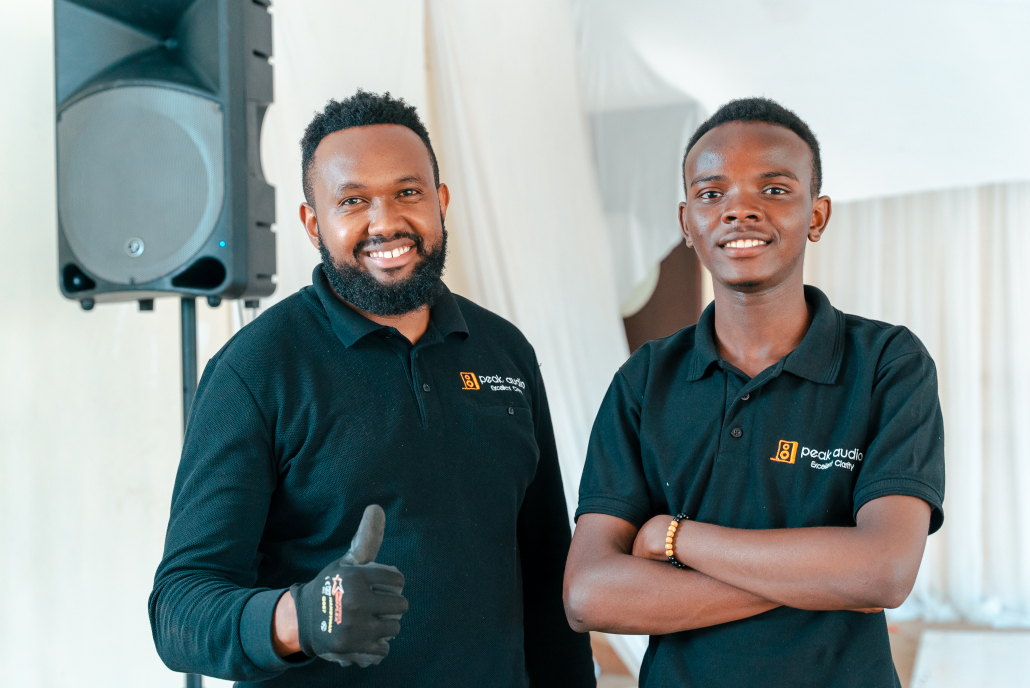
Children Party Sound Tips
Every parent dreams of a birthday celebration where laughter, music, and joyful chaos blend into the perfect day. But without the right sound, even the most colorful decorations and delicious cake can fall flat. That’s where Peak Audio steps in — ensuring that every giggle, every game announcement, and every beat of the music fills the air with energy and excitement. With our expertise in children’s events, we know exactly how to strike the perfect balance between clarity, safety, and fun.
Imagine the birthday song ringing out crystal clear, the MC’s voice carrying over squeals of delight, and the music setting just the right mood for dancing and games. At Peak Audio, we use professional-grade, kid-friendly sound equipment designed for spaces big and small — from cozy backyards to bustling event venues. Our team handles everything: setup, sound checks, and real-time adjustments so you can focus on enjoying your child’s special day without technical hiccups.
Ultimately, great sound transforms a party from “just okay” into unforgettable magic. With Peak Audio by your side, you’re not just renting speakers — you’re gaining a team of sound specialists who care as much about your event’s success as you do. We make sure every story told, every cheer shouted, and every beat dropped is heard loud and clear. Because for us, your child’s joy is the real headline act.
Leave a Reply
Want to join the discussion?Feel free to contribute!